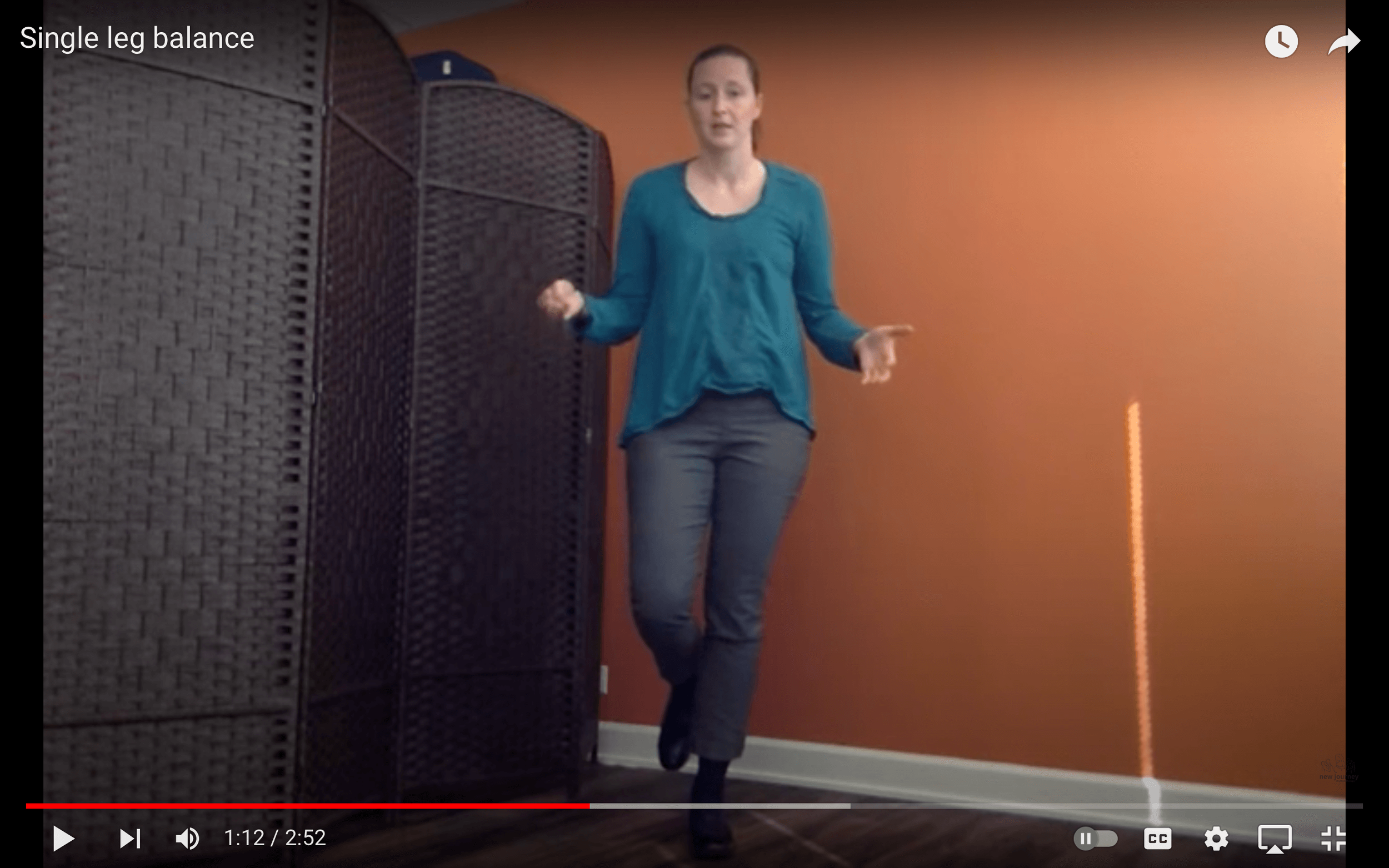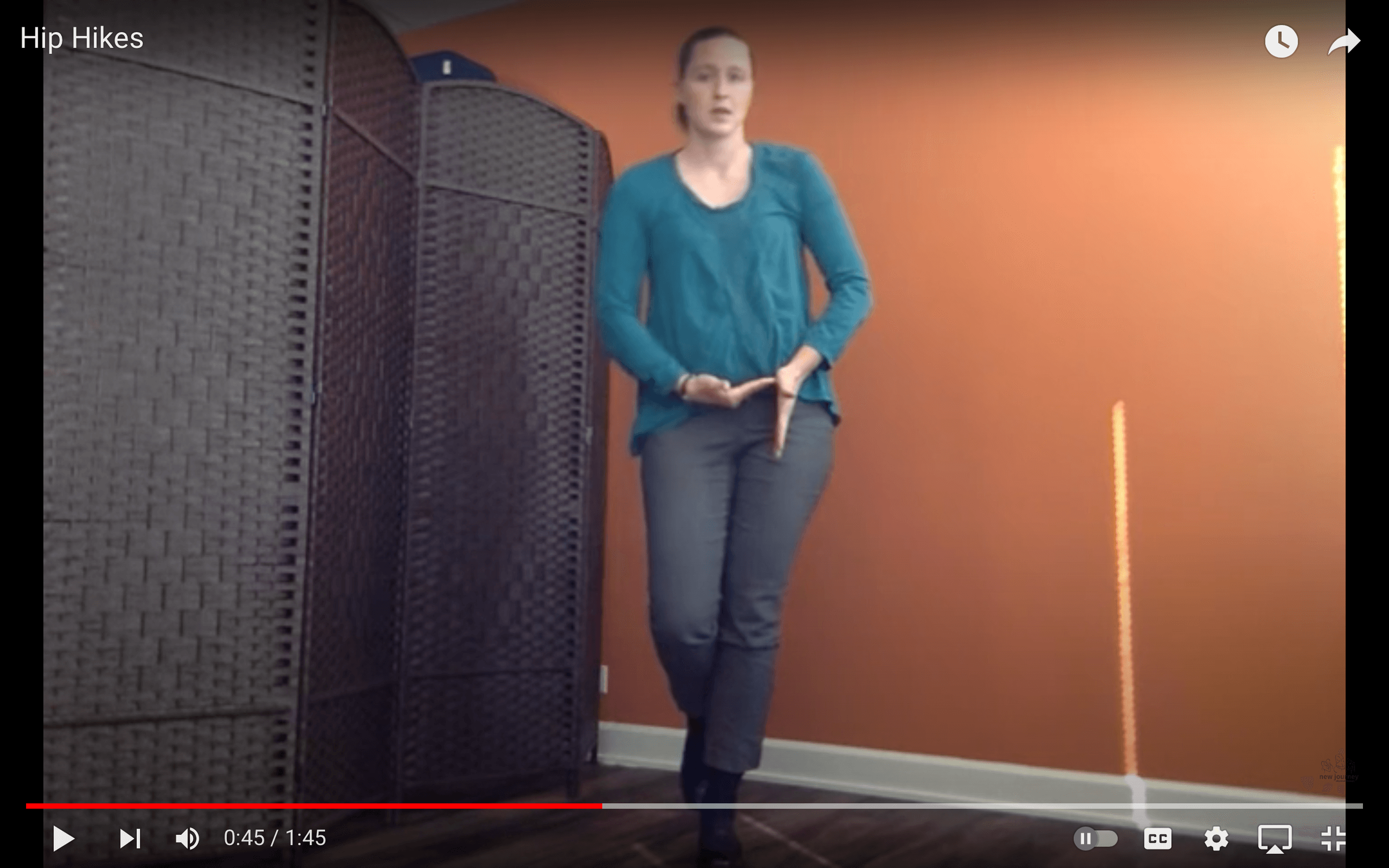Single leg hip exercises
I love including single leg exercises in my treatment plans, but I frequently get questions about why.
Why should I exercise on one leg, I don’t stand on one leg. . .
Really? That is so interesting. How do you walk without standing on your left leg while stepping with your right? We all stand on one leg every day, and it takes complex connections between brain and muscles to keep you standing up straight.
I can’t stand on one leg, I wobble too much
That means you need to stand on one leg more! When we balance on one leg our brains and muscles have to work together to maintain our position. When you wobble it is because your brain and muscles are communicating to keep you standing. A tendon in your ankle stretches as your body tips to the side. This information is then communicated through a nerve to your spinal cord, the response is sent back down to the muscle which contracts to correct your position. If you wobble a lot when you stand on one leg, then your brain and muscles are communicating more slowly than ideal. It means you should be standing on one leg a lot to improve the communication.
In addition, the two sides of your body are not symmetrical. They never will be in their appearance, coordination, strength, or range of motion, but the more uneven we are the more unbalanced we are in how we feel and move. When you are using both sides of your body in a nearly symmetrical pattern as in a squat, you are likely using your strong side more than your weak side. Exercising your two sides separately allows you to even out the existing asymmetries.
These two videos show basic single leg exercises
The videos show you how to do the exercises and some key points to look for when exercising on one leg. Mastering these two exercises will make it easier to progress to harder single leg exercises. Good luck and let me know what you think!



